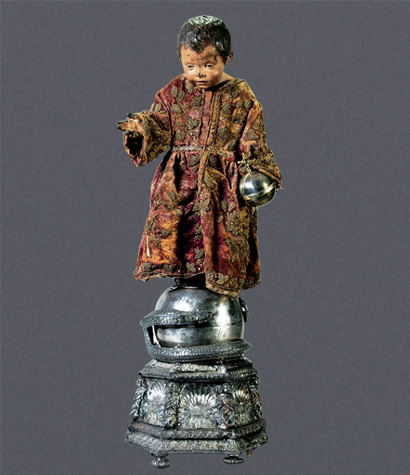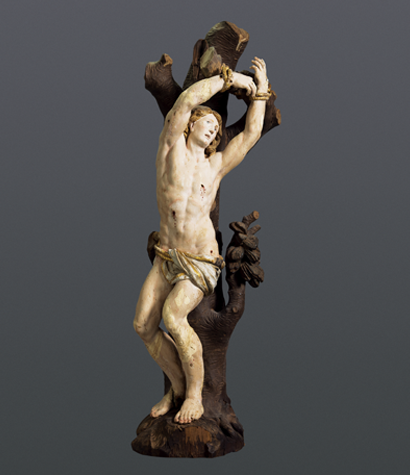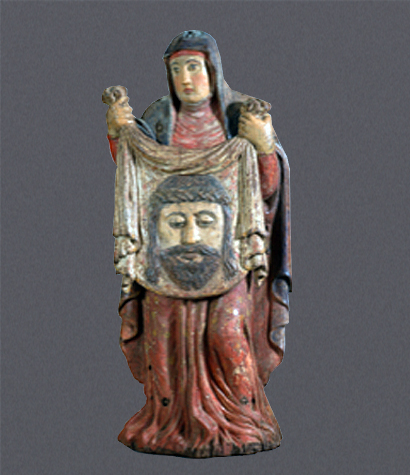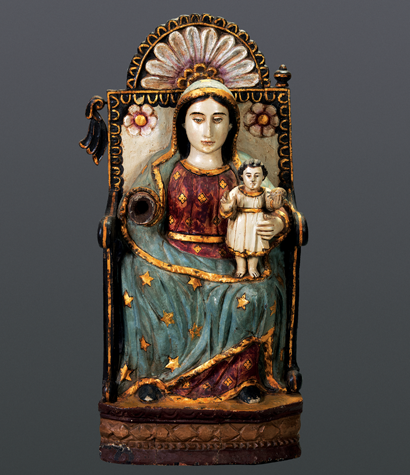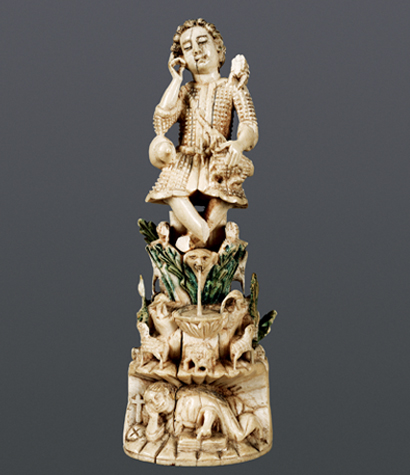
Images of the Infant Jesus as the Good Shepherd were popular in Indo-Portuguese art, their composite nature making them richly suggestive. In the Indian context, it is not difficult to see the artist of the 17th century instinctively choosing to align the Christ child with one very similar, and familiar to him, that of the god Krishna as a boy. Apart from their similar-sounding names, the pastoral landscape is significant to both, one a shepherd, the other, a cowherd.
An early symbolic representation, Christ as the Good Shepherd gained fresh currency during the Counter-Reformation. The same image, of Christ as a shepherd securing his flocks, is to be found in Psalm 23. Here, the young shepherd boy in sheepskin sits dozing or meditating (in an unusual Indian-style representation) while sheep leap over his shoulder and graze at his feet. He is on a terraced hillock which retains some of its vivid original colouring. From the upper level there juts out a face from whose mouth gushes out the water of life into a lotus-shaped receptacle from which birds of paradise drink deep. The grotto below shelters the holy penitent, St. Mary of Egypt, recognized by her attributes: the cross, bread of fasting and prayer book. Often, another penitent, Mary Magdalene, occupies this place, for both were sheep brought back into the fold.
Carved from a single piece of ivory, the treatment of the pedestal makes this an exemplary piece of Indo-Portuguese hybrid art, for it is an unusual depiction of the subject when compared to European representations. Lush green foliage of a symbolic Tree of Life surrounding this peaceful scene would have once been part of the original, now missing. Portable objects such as this were often designed for personal devotions.
Japan, ‘St Francis Xavier – His Life and Times,’ 1999.
NOTES
Two similar Indo-Portuguese objects in the Victoria & Albert Museum, London, display the same tiered pedestal, with other details varying (V & A, Museum. No. A. 38-1921; A. 27-1984).
PUBLICATIONS
Exhibition Catalogue, ‘St. Francis Xavier – His Life and Times,’ Japan, 1999.
Museum of Christian Art, Convent of Santa Monica, Goa, India, Calouste Gulbenkian Foundation, Lisbon, 2011.


